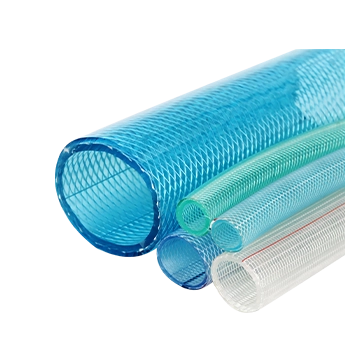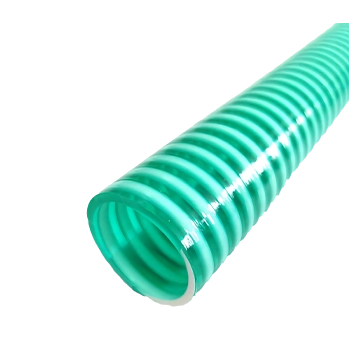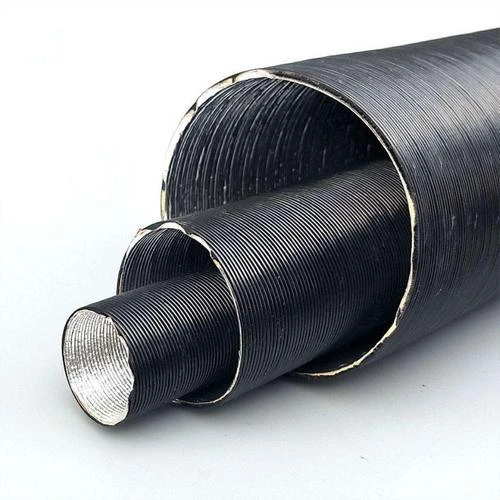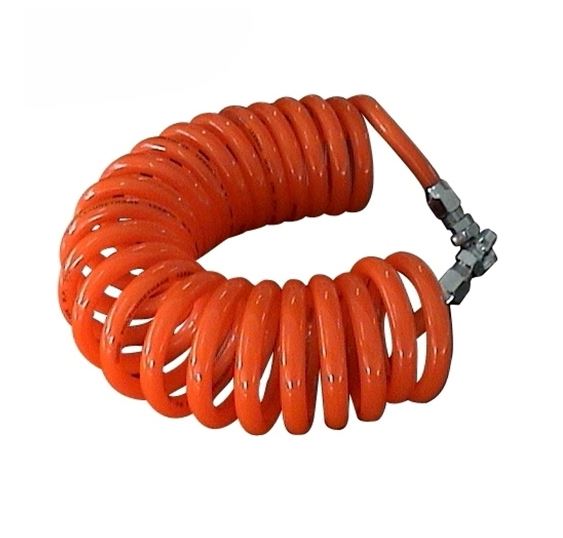High-Performance PU Ducting | Durable & Flexible Duct Hose
The Indispensable Role of Advanced Ducting Solutions in Modern Industry
In industrial environments where material handling, dust extraction, and ventilation are critical, the selection of appropriate ducting solutions directly impacts operational efficiency, safety, and longevity. Among the various options, pu ducting stands out as a superior choice due to its exceptional properties. This article delves into the technical intricacies, application versatility, and strategic advantages of modern polyurethane ducting, offering insights for B2B decision-makers and engineers seeking robust and reliable systems.
Understanding the advanced characteristics of specific materials, such as those used in a high-performance wire reinforced polyurethane hose, is crucial for optimizing industrial processes. From the manufacturing floor to specialized chemical processing plants, the demands on flexible ducting are rigorous, necessitating solutions that offer resilience, efficiency, and compliance with stringent industry standards.
Current Industry Trends in Flexible Ducting Technology
The industrial landscape for flexible ducting is continuously evolving, driven by technological advancements, stricter environmental regulations, and the need for greater operational efficiency. Key trends include:
- Emphasis on Durability and Abrasion Resistance: Industries like woodworking, abrasive material handling, and mining demand hoses that can withstand extreme wear. This has led to a surge in demand for materials like polyurethane, known for its superior abrasion resistance compared to PVC or rubber.
- Lightweight and Flexible Designs: Modern installations often require ducts that are easy to maneuver, install, and store. Manufacturers are focusing on designs that offer optimal flexibility without compromising strength, often incorporating spring steel wire for structural integrity.
- Chemical and Temperature Resistance: As industrial processes become more diverse, there's a growing need for ducting that can safely convey corrosive chemicals, hot air, or cold air without degradation. Specialized polyurethane formulations are meeting these challenges.
- Sustainability and Eco-Friendliness: The industry is moving towards more sustainable manufacturing practices and materials. While polyurethane itself is a synthetic polymer, manufacturers are exploring more efficient production methods and longer-lasting products to reduce waste.
- Compliance with Safety Standards: Adherence to international standards (e.g., ISO, REACH) is non-negotiable. Products must demonstrate compliance with flammability ratings, anti-static properties, and material safety data sheets (MSDS).
These trends underscore the critical role of specialized materials and manufacturing expertise in developing high-performance duct hose solutions tailored to diverse industrial requirements.
Technical Specifications of PU Steel Wire Vacuum and Duct Hose
Our flagship product, the PU steel wire vacuum and duct hose, exemplifies advanced engineering in flexible material conveyance. It is meticulously designed to offer superior performance in demanding industrial applications. The key to its robust performance lies in its composite structure and the intrinsic properties of its materials.
Material Composition:
- Wall Material: High-grade Ester-based Thermoplastic Polyurethane (TPU). This specific polyurethane offers exceptional resistance to abrasion, tearing, and many chemicals, making it ideal for conveying abrasive media. Its transparency also allows for easy visual inspection of flow.
- Përforcimi: Copper-plated spring steel wire helix, seamlessly integrated into the wall. This reinforcement provides outstanding structural stability, crush resistance, and ensures the hose maintains its shape under vacuum or positive pressure applications. It also facilitates grounding for anti-static applications when properly connected.
Key Technical Parameters:
| Parameter | Value/Description |
|---|---|
| Wall Thickness | 0.4mm to 1.5mm (standard, customizable) |
| Shkallë temperature | -40°C to +90°C (short term up to +125°C) |
| Diameter Range | Ø25mm to Ø500mm (standard, customizable) |
| Operating Pressure | Up to 0.25 bar (depending on diameter and wall thickness) |
| Presioni i vakumit | Up to 0.9 bar (depending on diameter and wall thickness) |
| Abrasion Resistance | Excellent (approx. 2.5-5 times better than rubber, 3-6 times better than PVC) |
| Chemical Resistance | Good against oils, greases, solvents, and various non-polar chemicals |
| Flexibility | Highly flexible, small bending radius |
| Certifications | ISO 9001:2015, REACH, RoHS compliant materials |

These specifications highlight the suitability of our wire reinforced polyurethane hose for a broad spectrum of challenging applications, from fine dust extraction to heavy-duty material transfer.
The Advanced Manufacturing Process of PU Ducting
The production of high-quality pu ducting is a sophisticated process that combines advanced material science with precision engineering. Our manufacturing process ensures consistency, durability, and superior performance in every product. Below is a schematic overview of the key steps:
1. Raw Material Procurement & Preparation:
- Material Selection: Sourcing premium-grade Thermoplastic Polyurethane (TPU) granules from certified suppliers, ensuring optimal physical properties like abrasion resistance, flexibility, and chemical inertness. High-tensile, copper-plated spring steel wire is also procured, meeting strict metallurgical standards.
- Drying & Blending: TPU granules are carefully dried to eliminate moisture, preventing material degradation during extrusion. Specific additives (e.g., UV stabilizers, flame retardants, anti-static agents) are blended at this stage according to product specifications.
2. Extrusion of PU Film:
- Film Formation: The dried TPU granules are fed into a precision extruder where they are melted and shaped into a continuous, thin film or strip. Temperature and pressure control are critical for consistent film thickness and quality.
3. Spiral Winding & Fusion:
- Helix Integration: The steel wire is spirally wound into the extruded PU film on a specialized winding machine. Concurrently, heat or solvent bonding is applied to permanently fuse the PU material around the wire, creating a smooth inner wall and a robust, flexible structure. This step is critical for forming the characteristic ribbed exterior and smooth interior of the wire reinforced polyurethane hose.
4. Cooling, Curing & Cutting:
- Stabilization: The newly formed hose is cooled rapidly to set its shape and dimensions, preventing distortion. Subsequent curing ensures optimal material integrity and performance.
- Precision Cutting: The continuous hose is cut to precise customer-specified lengths, often utilizing automated cutting systems for accuracy.
5. Quality Control & Testing:
- Adherence to Standards: Each batch undergoes rigorous testing against international standards such as ISO 9001 for quality management and relevant ASTM standards for material properties (e.g., tensile strength, tear resistance, abrasion resistance). Pressure testing, vacuum resistance, and bending radius tests are routinely performed.
- Visual Inspection: Thorough visual inspections ensure no defects, consistent wall thickness, and proper wire embedding.

This meticulous process ensures that our duct hose products deliver exceptional service life, typically ranging from 5 to 10 years or more depending on application severity and maintenance practices. Our products are engineered for demanding target industries including woodworking, plastics processing, ceramics, textiles, chemical, mining, and general industrial vacuum and ventilation.
In typical application scenarios, these hoses demonstrate distinct advantages:
- Energy Saving: The smooth internal bore minimizes friction, reducing pressure drop and energy consumption in pneumatic conveying systems.
- Corrosion Resistance: The TPU material provides excellent resistance to many industrial chemicals, ensuring longevity in aggressive environments.
- Acoustic Dampening: The material properties also contribute to a reduction in noise generated by conveyed materials.
Application Scenarios for High-Performance PU Ducting
The versatility of pu ducting makes it an invaluable component across a multitude of industrial applications. Its unique combination of flexibility, durability, and resistance makes it suitable for environments where other materials fail to perform adequately.
- Woodworking and Furniture Industry: Essential for dust extraction from saws, planers, and sanding machines. The high abrasion resistance handles wood chips and sawdust effectively, preventing clogging and ensuring a clean working environment.
- Plastics Processing: Used for conveying plastic pellets, granules, and powders. Its smooth interior and anti-static options are crucial for preventing material buildup and ensuring safe operation.
- Ceramic and Glass Industry: Ideal for transporting abrasive dust and small fragments generated during grinding, cutting, and polishing operations.
- Mining and Construction: Employed in heavy-duty applications for conveying rock dust, gravel, sand, and other abrasive bulk materials, where its robust construction and high tear resistance are paramount.
- Agricultural Sector: For vacuum and conveying systems dealing with grains, seeds, and animal feed, requiring both abrasion resistance and food-grade compliance (where applicable).
- Pharmaceutical and Chemical Industries: With specific grades, it can be used for conveying fine powders and fumes, often requiring excellent chemical resistance and anti-static properties.
- HVAC and Ventilation Systems: Used for air handling in industrial settings, particularly where abrasive particles or corrosive fumes might be present.

These diverse applications underscore why the correct selection of a duct hose from a reputable duct hose manufacturer is vital for operational continuity and safety.
Technical Advantages and Performance Comparison
The technical advantages of wire reinforced polyurethane hose are numerous, setting it apart from alternative materials. Its superior performance translates into reduced downtime, lower maintenance costs, and improved system efficiency.
Key Advantages:
- Exceptional Abrasion Resistance: Polyurethane is inherently more abrasion-resistant than most rubbers, PVC, and even some metals, making it ideal for abrasive media like sand, gravel, wood chips, and granular materials.
- High Tensile Strength and Tear Resistance: The robust construction, coupled with the integrated steel wire helix, provides excellent resistance to tearing and puncturing, even under high stress.
- Outstanding Flexibility and Durability: Despite its strength, PU ducting remains highly flexible, allowing for tight bending radii without kinking or collapsing, which is crucial in confined spaces.
- Chemical and Oil Resistance: Ester-based PU offers good resistance to many oils, greases, and non-polar solvents, extending service life in challenging chemical environments.
- Wide Temperature Range: Operates effectively in a broad temperature spectrum, from extreme cold to moderate heat, without significant loss of flexibility or strength.
- Smooth Bore for Optimized Flow: The smooth internal surface minimizes friction, reducing pressure drop and preventing material accumulation, thus enhancing material flow and energy efficiency.
- Transparency for Monitoring: The clear wall material allows operators to visually inspect material flow, identify blockages, and monitor system performance without disassembly.
- Anti-static Options: Specific models can be made with electrically conductive walls or through grounding the steel wire, preventing static charge buildup and ensuring safety in explosive dust environments (e.g., ATEX compliant).
Performance Comparison: PU vs. Other Materials
| Feature | PU Ducting (Wire Reinforced) | PVC Ducting (Wire Reinforced) | Rubber Ducting |
|---|---|---|---|
| Abrasion Resistance | Excellent (best in class) | Good | Moderate to Good (depending on type) |
| Flexibility | Excellent | Good (can stiffen in cold) | Good |
| Shkallë temperature | Wide (-40°C to +90°C) | Limited (0°C to +70°C) | Moderate (e.g., -20°C to +80°C) |
| Chemical Resistance | Good (oils, solvents) | Moderate (some chemicals) | Varies greatly by rubber type |
| Pesha | Moderate (lightweight for its strength) | Relatively light | Heavier |
| Smooth Bore | Yes | Yes | Can be ribbed, not always smooth |
| Transparency | Yes (Clear) | Yes (Clear) | No |
| Cost-Effectiveness (Long-term) | High initial, excellent ROI | Low initial, moderate ROI | Moderate initial, moderate ROI |

This comparison clearly demonstrates that while initial costs for polyurethane solutions might be higher, the superior performance, extended service life, and reduced maintenance requirements of pu ducting often result in a significantly lower total cost of ownership over time, making it the most economical choice for demanding applications.
Choosing Your Duct Hose Manufacturer: A Vendor Comparison Framework
Selecting the right duct hose manufacturer is a strategic decision that goes beyond merely comparing product prices. It involves evaluating a vendor's capabilities, quality assurance, and ability to deliver consistent, high-performance solutions. Here’s a framework for comparison:
1. Product Quality & Material Expertise:
- Material Purity: Does the manufacturer use virgin, high-grade TPU or recycled/blended materials? Pure materials ensure optimal performance.
- Construction Integrity: Look for seamless integration of the steel wire helix, smooth interior walls, and consistent wall thickness.
- Performance Data: A reputable manufacturer will provide comprehensive technical data sheets, including abrasion resistance values (e.g., DIN 53516), pressure ratings, and temperature ranges.
2. Certifications & Compliance (Authoritativeness):
- Quality Management: ISO 9001:2015 certification indicates a robust quality management system.
- Environmental & Safety: Compliance with REACH, RoHS, and potentially ATEX (for anti-static applications) demonstrates commitment to environmental responsibility and safety.
- Industry-Specific Standards: For food-grade applications, FDA compliance is essential.
3. Customization Capabilities:
- Can they produce specific diameters, wall thicknesses, or lengths?
- Do they offer different material formulations (e.g., flame retardant, anti-static, microbial resistant)?
- Are specialized end fittings or connections available?
4. Customer Support & After-Sales Service (Trustworthiness):
- Technical Assistance: Availability of engineers for consultation on specific application challenges.
- Warranty & Returns: Clear policies on product warranties and handling of defective products.
- Lead Times & Logistics: Reliable delivery schedules and efficient global logistics capabilities.
5. Experience & Reputation:
- Years in Service: A longer track record often correlates with greater expertise and reliability. Kebing, for example, leverages years of specialized experience in flexible hose manufacturing.
- Client Portfolio: Partnering with recognized industry leaders is a strong indicator of trust and performance.
- Customer Feedback: Testimonials and case studies provide real-world evidence of product performance and service quality.

By meticulously evaluating these criteria, businesses can confidently select a supplier that not only meets their immediate needs but also serves as a reliable long-term partner for their pu ducting requirements.
Customized Solutions for Specialized Needs
While standard pu ducting products offer broad utility, many industrial applications present unique challenges that demand tailored solutions. A truly professional duct hose manufacturer excels in providing customized options, ensuring optimal fit and performance for specific operational parameters.
Customization options for wire reinforced polyurethane hose typically include:
- Specific Diameters and Lengths: Beyond standard sizes, hoses can be manufactured to precise internal and external diameters, and cut to exact lengths to minimize waste and simplify installation.
- Varied Wall Thicknesses: Thicker walls provide enhanced abrasion resistance and crush proofing for heavy-duty applications, while thinner walls offer greater flexibility and lighter weight for less demanding uses.
- Special Material Additives:
- Anti-static properties: Essential for preventing static discharge when conveying combustible materials or in explosive atmospheres, often achieved with conductive agents or by grounding the steel helix.
- Flame Retardancy: For applications where fire safety is paramount, special additives can make the hose self-extinguishing.
- Microbial Resistance: Important for food processing or medical applications, preventing bacterial and fungal growth.
- UV and Hydrolysis Resistance: For outdoor applications or environments with high humidity, additives can extend hose life by resisting degradation from UV radiation and water.
- Color Options: While clear is standard for visual monitoring, specific colors can be implemented for branding, safety coding, or system differentiation.
- Integrated End Fittings: Hoses can be supplied with pre-attached connectors, cuffs, or flanges, streamlining installation and ensuring a secure, leak-proof connection.
Partnering with a manufacturer experienced in these customizations allows businesses to procure solutions perfectly aligned with their operational demands, often leading to improved efficiency, reduced maintenance, and enhanced safety protocols.
Application Case Studies (Experience & Authoritativeness)
Real-world application demonstrates the tangible benefits of high-quality pu ducting. Our experience working with diverse industrial clients has yielded significant improvements in operational efficiency and system longevity.
Case Study 1: Enhanced Dust Extraction in a Wood Processing Mill
A large timber processing client, renowned for its sustainable forestry practices, faced persistent issues with premature wear of PVC duct hose in their dust extraction systems. The abrasive nature of sawdust and wood chips caused frequent tears and blockages, leading to increased maintenance costs and operational downtime.
- Challenge: High abrasion from wood waste, frequent hose replacement (every 6-9 months).
- Solution: We recommended and supplied our heavy-duty, 1.0mm wall thickness pu ducting with embedded steel wire. The transparent material allowed operators to monitor for buildup, and the smooth bore minimized blockages.
- Outcome: Hose service life extended to over 3 years, reducing replacement frequency by 75%. The client reported a 20% reduction in maintenance labor and a significant improvement in air quality on the shop floor, contributing to employee safety and compliance with OSHA standards.
- Client Feedback: "The switch to polyurethane ducting was a game-changer. The initial investment paid off within the first year, and we've seen a noticeable improvement in our dust collection efficiency."
Case Study 2: Optimized Granulate Conveyance in a Plastics Manufacturing Plant
A leading plastics injection molding firm encountered problems with static electricity and slow material flow when conveying polymer granulates using conventional rubber hoses. Static buildup posed a safety risk and caused material adhesion, reducing throughput.
- Challenge: Static charge buildup, material clogging, and insufficient flow rates for plastic pellets.
- Solution: We provided custom-engineered anti-static wire reinforced polyurethane hose, where the steel helix was factory-grounded to dissipate static electricity. The smooth, transparent PU wall facilitated faster material transport and allowed for easy visual inspection.
- Outcome: Static-related issues were completely eliminated, enhancing safety and operational reliability. Material flow rates increased by 15%, leading to higher production output. The transparent hose also enabled quick identification of any potential blockages, minimizing downtime.
- Client Feedback: "The customized anti-static PU hose solved our material handling headaches. It's robust, efficient, and provides peace of mind regarding safety."

These cases illustrate our commitment to understanding client challenges and providing expertly engineered solutions that deliver measurable value.
Frequently Asked Questions (FAQ)
Q: What makes PU ducting superior to PVC or rubber hose?
A: PU ducting offers significantly higher abrasion resistance, better flexibility, a wider temperature range, and superior resistance to many chemicals and oils compared to PVC or standard rubber hoses. This translates to longer service life and reduced replacement costs, especially in abrasive applications.
Q: Is your PU ducting suitable for food-grade applications?
A: We offer specific grades of wire reinforced polyurethane hose that comply with FDA regulations for food contact. Please specify your requirements, and we can provide the appropriate product and certification details.
Q: How do I ensure proper grounding for anti-static PU hoses?
A: For anti-static pu ducting with an embedded steel wire, the helix must be properly grounded at both ends to dissipate static electricity effectively. We provide guidance on correct grounding procedures to ensure safe operation in potentially explosive atmospheres.
Q: Can these hoses be used outdoors?
A: Yes, our polyurethane material has good resistance to weathering. For prolonged outdoor exposure, especially to direct sunlight, we offer PU hoses with added UV stabilizers to prevent degradation and extend service life.
Q: What is the typical service life of your PU ducting?
A: The service life of duct hose depends heavily on the application, media, temperature, and maintenance. However, under typical industrial conditions, our high-quality pu ducting often lasts 3-5 times longer than comparable PVC or rubber hoses, often achieving 5 to 10 years or more.
Lead Time, Warranty, and Customer Support (Trustworthiness)
Lead Time & Fulfillment:
We understand the critical nature of timely delivery in industrial operations. Our standard lead times for common pu ducting products typically range from 2 to 4 weeks, depending on order volume and customization requirements. For urgent requests or large-scale projects, we work closely with clients to optimize production and logistics. Our efficient supply chain and manufacturing processes are designed to meet global demand reliably.
Warranty Commitments:
All our duct hose products are backed by a comprehensive 12-month warranty against manufacturing defects from the date of purchase. This commitment reflects our confidence in the quality and durability of our engineering. We adhere to stringent ISO 9001:2015 quality management standards, ensuring every product leaving our facility meets the highest benchmarks.
Customer Support & After-Sales Service:
Our dedication to our clients extends far beyond the point of sale. We offer:
- Expert Technical Consultation: Our team of engineers and product specialists is available to assist with product selection, application challenges, and system optimization.
- Responsive Support: Dedicated customer service channels ensure prompt responses to inquiries, order status updates, and technical assistance.
- Global Reach: With distribution capabilities worldwide, we ensure our products and support are accessible to our international clientele.
We believe in building long-term partnerships through consistent quality, reliable performance, and unparalleled customer service.
Conclusion: The Smart Choice for Industrial Efficiency
In the competitive and demanding landscape of modern industry, the choice of flexible ducting solutions profoundly impacts operational continuity, safety, and overall cost-effectiveness. The technical superiority and versatile applications of pu ducting, particularly the wire reinforced polyurethane hose, position it as the optimal choice for a wide array of challenging material handling, dust extraction, and ventilation tasks.
By leveraging advanced materials, precision manufacturing, and comprehensive quality control, a reliable duct hose manufacturer can provide solutions that not only meet but exceed the stringent requirements of B2B clients and engineers. Investing in high-quality polyurethane ducting is an investment in long-term operational efficiency, reduced maintenance, and enhanced workplace safety, ultimately contributing to a stronger bottom line.
References
- European Committee for Standardization. EN ISO 9001:2015 - Quality management systems - Requirements.
- American Society for Testing and Materials. ASTM D412 - Standard Test Methods for Vulcanized Rubber and Thermoplastic Elastomers—Tension.
- European Chemicals Agency (ECHA). REACH (Registration, Evaluation, Authorisation and Restriction of Chemicals) Regulation (EC) No 1907/2006.
- DIN 53516: Testing of rubber and elastomers; determination of abrasion resistance.
- Occupational Safety and Health Administration (OSHA). 29 CFR 1910.94 - Ventilation; Subpart G - Occupational Health and Environmental Control.
-
Flexible Duct Hose: Durable & Versatile for Vacuum & AirLajmeSep.01,2025
-
High-Performance PU Ducting | Durable & Flexible Duct HoseLajmeAug.31,2025
-
Durable PVC Steel Wire Reinforced Hose - Flexible & ClearLajmeAug.30,2025
-
Durable PVC Air Hoses: Flexible & Reliable Industrial SolutionsLajmeAug.29,2025
-
PVC Suction Hoses: Flexible, Durable Fluid Transfer SolutionsLajmeAug.28,2025
-
Advanced Corrugated Pvc Hose Technology for Modern Industrial NeedsLajmeAug.22,2025














